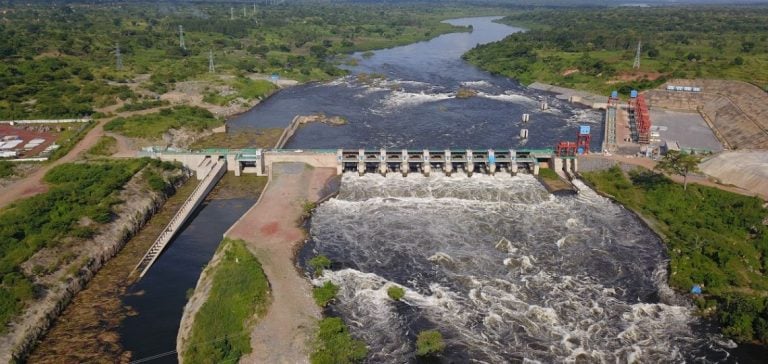The commissioning of the Karuma hydropower plant represents a major strategic step forward for Uganda.
With a capacity of 600 megawatts (MW), this facility brings the country’s total generating capacity to over 2,000 MW.
The $1.7 billion project was 85% financed by a loan from China Exim Bank.
Karuma is located on the Nile River, a strategic geographical position that enables it to meet both domestic demand and export needs to neighboring countries, notably Rwanda, Tanzania and Kenya.
Economic and energy leverage for Uganda
The construction of Karuma, undertaken by China’s Sinohydro Corporation, is part of a national strategy to ensure access to stable, competitively priced energy.
Uganda’s ambition is to become a reliable regional energy supplier, strengthening its trade relations with its East African neighbors.
At the same time, additional projects are already underway, such as the construction of a 248-kilometer, 400-kilovolt (kV) transmission line, enabling electricity generated by Karuma to be exported.
Uganda is also planning to boost its exports by building a new transmission line to the energy-deficient country of South Sudan.
This project, estimated at $180 million, will add to the existing infrastructure, consolidating Uganda’s position as the region’s energy hub.
This export capacity will enable the country to diversify its sources of income, while playing a key role in the electrification of East Africa.
Sino-Ugandan cooperation at the heart of major projects
China’s role in the development of energy infrastructure in Uganda is confirmed by the Karuma project, the second major hydropower plant financed by Chinese loans.
In 2019, Uganda already inaugurated the 188 MW Isimba power plant, a $500 million project also supported by the China International Water and Electric Corporation.
These initiatives illustrate Uganda’s growing dependence on Chinese funding for its major infrastructure projects.
Although China has provided significant financial support, these projects are not without their challenges.
The Karuma project, originally scheduled for completion in 2018, has suffered several delays, due to logistical complications, as well as the impact of the COVID-19 pandemic.
However, despite these obstacles, the Ugandan government is persisting in its efforts to finalize projects of national scope, with a view to strengthening its energy network and improving people’s quality of life.
Impact on the economy and infrastructure
The inauguration of Karuma is part of an overall strategy to make energy accessible and affordable in Uganda.
President Yoweri Museveni has stressed the importance of access to low-cost energy to stimulate the economy and attract foreign investment.
Cheaper energy, combined with increased capacity, enables Uganda to support its nascent industrialization, particularly in the manufacturing and extractive sectors.
The development of electricity transmission infrastructure is also crucial.
Uganda has invested in high-voltage transmission lines to ensure efficient distribution of the power generated by Karuma.
This infrastructure should also help to reduce electricity losses, a chronic problem that hampers the profitability of the power plants.
By investing in these networks, the government intends to improve the stability of the national grid while meeting the needs of the region.
Outlook for Uganda’s energy future
By increasing its energy capacity, Uganda is seeking to strengthen its regional position.
However, challenges remain, particularly in terms of infrastructure maintenance and managing relations with creditors, mainly China.
Recourse to external financing raises questions about the sustainability of these investments, particularly with regard to the repayment of long-term loans.
The stability of regional electricity markets will be crucial to guarantee the return on these projects.
By becoming a regional energy supplier, Uganda is strategically positioned to benefit from the opportunities offered by the growing demand for electricity in Africa.
Improved generation and transmission capacity should also encourage new investment in other key sectors of the Ugandan economy, such as mining and services.






















